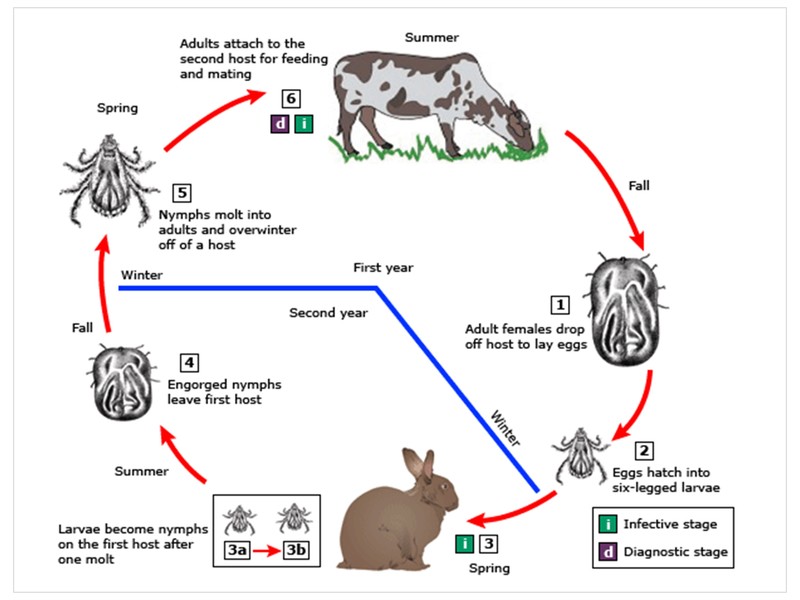Crimean-Congo haemorrhagic fever (CCHF): Top practice pointers
M3 India Newsdesk Oct 01, 2020
Recently, an alert was issued for a district in Maharashtra, after several cases of Crimean-Congo haemorrhagic fever (CCHF) were reported. While the country is already grappling with one pandemic, the rise of another viral disease is cause for concern. Here, Dr. Monish Raut provides a quick primer on the diagnosis and treatment approach for CCHF.
For our comprehensive coverage and latest updates on COVID-19 click here.
While the entire world is battling with the pandemic of COVID-19, recent detection of 4 cases of Crimean-Congo hemorrhagic fever (CCHF) in neighbouring Gujarat areas have raised a concern for Maharashtra. CCHF is a viral infection spread by ticks. It was first identified as Crimean fever in 1944 in Soviet soldiers. In 1956, a boy with similar symptoms was isolated and the virus was called Congo Virus. It was proved that the causative agent in both diseases was the same strain, which was later named the CCHF strain.
Epidemiology
CCHF is an emerging infectious disease transmitted by the main vector, ticks of the genus Hyalomma. More than 1000 human cases from Southeast Europe, Middle East, Africa, and Western Asia are recorded per year. The main means of human transmission is through tick bites. Cases in India were first reported in 2011.
Ticks
CCHFV is mainly transmitted by Hyalomma family ticks, particularly Hyalomma marginatum. The most common viral reservoirs are domestic animals such as cattle, sheep, goat, and pig , infected by adult ticks. Ticks can remain attached to the animals for 2 to 13 days. During this period, virus begins to replicate. It cannot survive outside the host but may be active in infected body fluids such as blood, stool, or vomit.
Two-host Ixodid tick life cycle
Modes of Transmission
- Tick bites, direct contact with blood or other bodily fluids of infected animals, nosocomial transmission, vertical transmission.
- H. marginatum can attach anywhere in the body. The disease can be transmitted by tick bites or by crushing ticks with bare fingers.
- Popular causes of nosocomial transmission are direct contact with blood and body fluids, needle-stick injuries, splash exposure and aerosol generating procedures. Later stage of the infection carries a higher viral load, hence more risk.
Virology
CCHF virus (CCHFV) is negative-stranded, enveloped RNA viruses and belongs to Nairovirus genus from the family Bunyaviridae.
Clinical presentation
Although the majority of the cases (88%) are sub-clinical, the remaining cases may manifest as haemorrhage and multiorgan failure. The incubation period after tick bite is 1 to 3 days. The incubation period after contact with blood and body fluids is 3 to 7 days. Clinical symptoms generally include sudden onset of malaise, myalgia, dizziness, headache, fever, sore throat, photophobia, conjunctivitis, vomiting, nausea, and abdominal pain.
These non-specific symptoms are commonly observed up to seven days and later either recovery sets in or continuation to severe disease. The convalescence period is without any long term sequelae.
Severe disease may show as haemorrhagic manifestations such as bleeding at various sites like gum, lung, abdomen, nose urinary tract, vaginal bleeding, petechiae, and ecchymosis. Cytokine storm may lead to raised vascular permeability causing hypotension, multiple organ dysfunction and death.
Diagnosis
Reverse-transcriptase polymerase chain reaction (RT-PCR) and specific immunoglobulin (Ig)M and IgG by enzyme-linked immunosorbent assay (after 5 days of symptoms) are the mainstay of diagnosis.
Treatment
No definite antiviral treatment is approved for the disease yet. Ribavarin was studied but the results were controversial. Management should be directed at proper diagnosis, supportive care, and treatment, and prevention of the disease. Role of steroids, intravenous immunoglobulin, or plasma exchange are not proven yet.
Supportive care
Supportive treatment can be done in the form of fluid and electrolyte balance and fever and pain management by using paracetamol. Aspirin and ibuprofen should be avoided considering adverse effect on clotting. Platelet transfusion can be considered to maintain platelet count >50,000/mm3 if there is bleeding. It can also be considered in patients with platelet count <20,000/mm3 without bleeding
Infection control
Precautions
Infection control precautions such as standard, contact, and droplet precautions are of paramount importance to curb down the spread.
- Patients should be treated in isolation rooms
- Training of healthcare workers about CCHF transmission
- Hand hygiene
- Prevention of exposure
- Use of personal protective equipment
Contact precautions
- Usage of appropriate personal protective equipment (an impervious gown, gloves, mask, and eye/face protection, respiratory protection (N95 mask or FFP3 respirator), shoe covers
- Proper disposal of personal protective equipment while leaving patient rooms
Environmental disinfection
It can be done by using 1% sodium hypochlorite, 70% alcohol, 2% glutaraldehyde, hydrogen peroxide, and peracetic acid.
Prognosis
The mortality rate varies among countries and ranges from 2 to 80% [9,131-133]. Mortality rates reported are about 4 to 20% mostly due to limited or delayed access to healthcare facilities in rural parts.
Prevention
Patients should be advised to-
- Avoid tick exposure/bites and avoiding contact with animal bodily fluids
- Avoid handling ticks with bare hands and avoid crushing/squeezing them
- Use of permethrin-treated clothes and DEET (20 to 30% N,N-diethyl-m-toluamide ) repellant for the skin for some protection
Farmers, cattle breeders, animal husbandry officials, and meat sellers need to take precautions particularly.
Disclaimer- The views and opinions expressed in this article are those of the author's and do not necessarily reflect the official policy or position of M3 India.
The author, Dr. Monish S Raut is a Consultant in Cardiothoracic Vascular Anaesthesiology. His area of expertise is perioperative management and echocardiography with numerous publications in various national and international indexed journals.
-
Exclusive Write-ups & Webinars by KOLs
-
Daily Quiz by specialty
-
Paid Market Research Surveys
-
Case discussions, News & Journals' summaries
